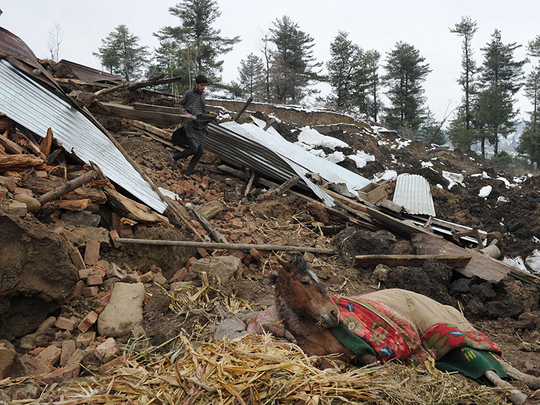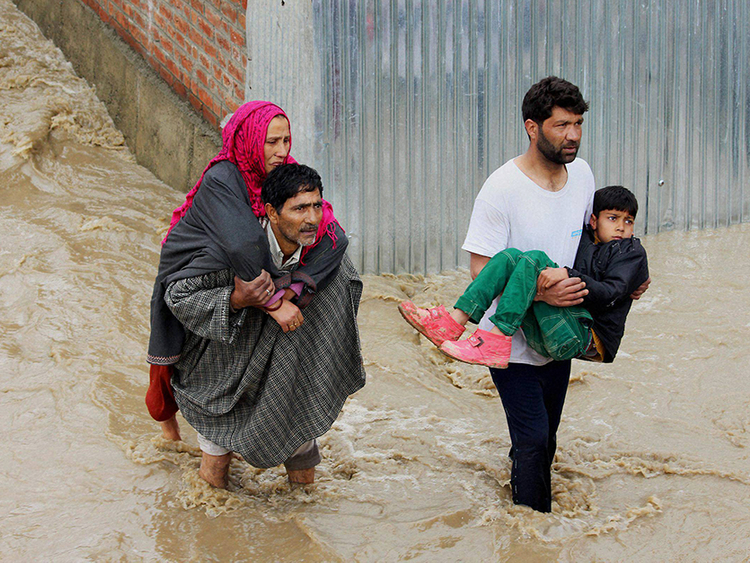
Srinagar: Rescuers on Monday pulled three bodies from landslides in Kashmir and were searching for those still buried as hundreds fled their homes after flooding triggered by heavy rain.
Police and witnesses said landslides had buried 16 people in several houses in Chadoora, the worst hit area of the Himalayan region where hundreds were killed in devastating floods last September.
“We have extricated three bodies from under the landslide so far,” said regional police chief Javid Gillani.
“We have some more equipment in place and that will allow us to speed up looking for the rest,” Gillani said.
A villager described how the ground above the houses in Chadoora, 15 kilometres west of the main city of Srinagar, collapsed without warning.
“All of them just suddenly got buried alive. Now they are nowhere to be found,” Mohammad Sultan said.
An AFP reporter said earth-moving machines had been unable to get close because roads had been swept away, leaving police and soldiers armed only with shovels to search for the victims.
One local police officer speaking on condition of anonymity said there was “no hope of finding anyone alive” given the scale of the landslide.
Gillani said 237 families had been evacuated, most of them from Chadoora, after the government issued a flood alert Monday when the River Jhelum swelled to dangerously high levels.
One man was washed away in Pacheri village, some 250 kilometres south of Srinagar, when he tried to cross a flash flood in his car.
“He is presumed dead but we have not found the body as yet,” a top regional administrator, Pawan Kotwal, said.
With more rain forecast for the next few days, authorities set up relief camps in Srinagar and urged people living near the Jhelum to move to safer areas.
Many residents said they did not trust the authorities after the floods last September that killed around 300 people, left thousands more homeless and destroyed property and infrastructure worth an estimated $16 billion (Dh58.72 billion).
Srinagar resident Rafique Ahmad Wani said he had been forced to leave his home and move in with relatives after being flooded for the second time in less than a year.
“Ever since the last flood we have been asking authorities to repair the embankment of the stream. But nothing was done,” he said.
“Now we are flooded again and had to leave our homes,” he added, calling the government “callous”.
Some complained that Srinagar’s drains had not been cleared since the last disaster, causing water to back up and flood the city again.
“My factory was not flooded the last time. But now I have two feet of water on my factory floor. This is all because of water logging,” said Ashraf Mir, an industrialist and president of Federation Chamber of Commerce and Industry, Kashmir.
The Kashmir government was severely criticised for its response to the 2014 disaster, with parts of Srinagar still cut off days after the floods hit and residents forced to organise their own rescue efforts.
Television footage showed furious locals stoning army rescuers and helicopters carrying relief to flood-hit areas.
The then-chief minister Omar Abdullah defended his government’s handling of the worst floods to hit the region in a century, saying no one could have foreseen their magnitude.
But voters later ousted his party from power in state elections, a result attributed in part to public anger over the handling of the disaster.













